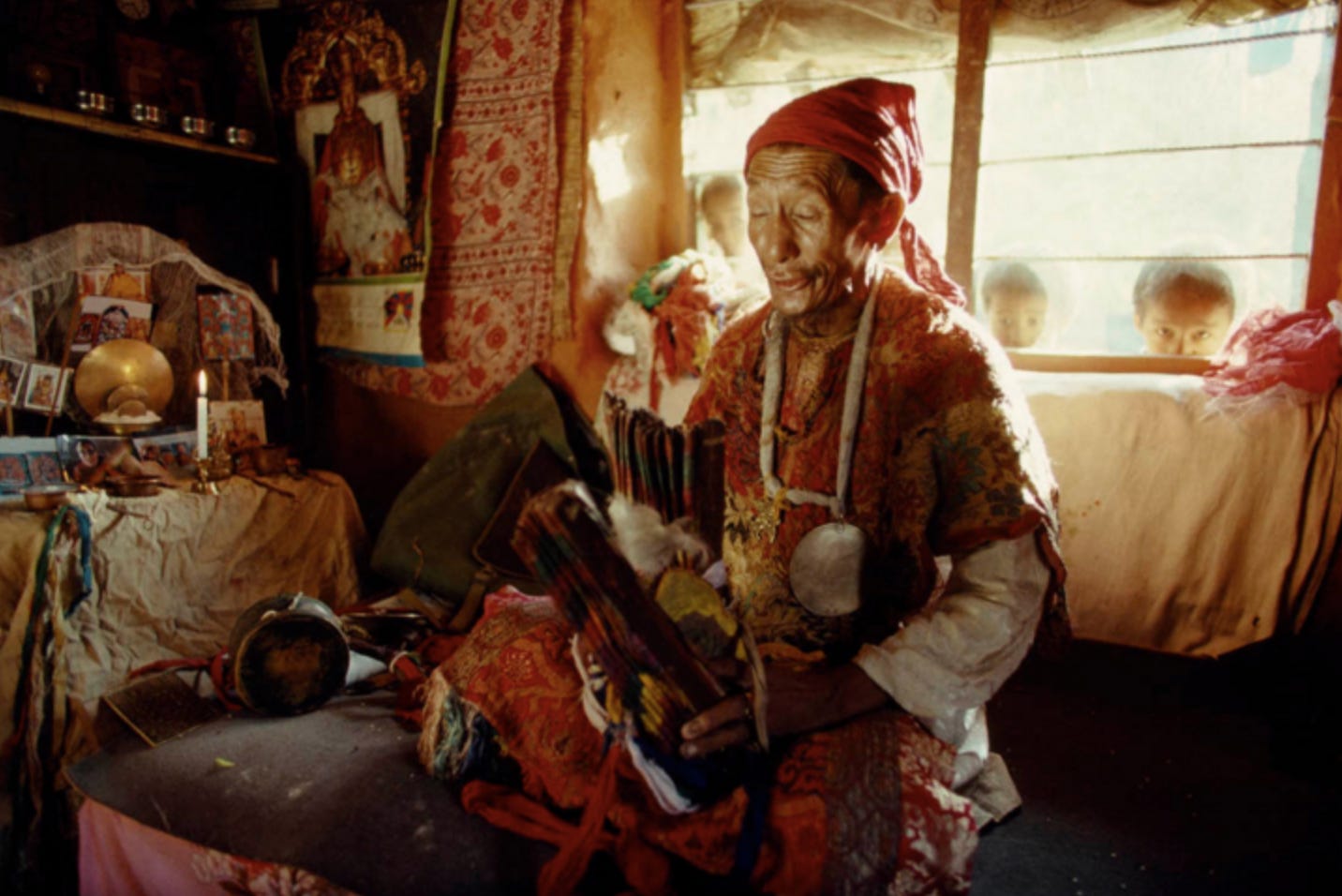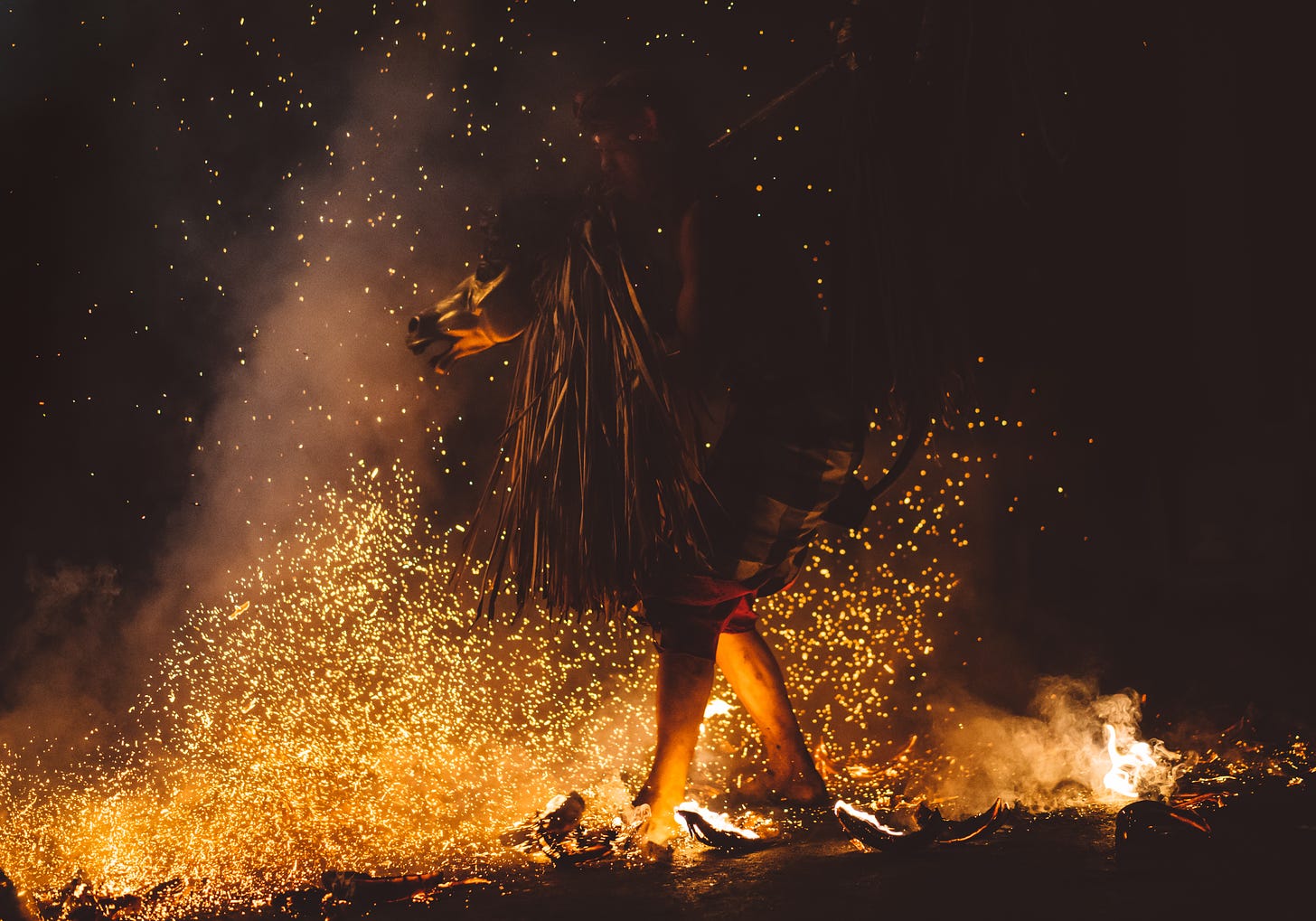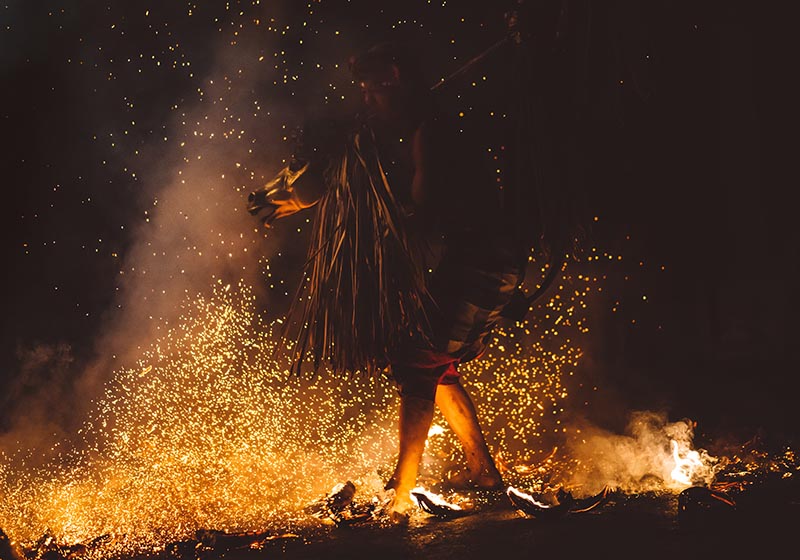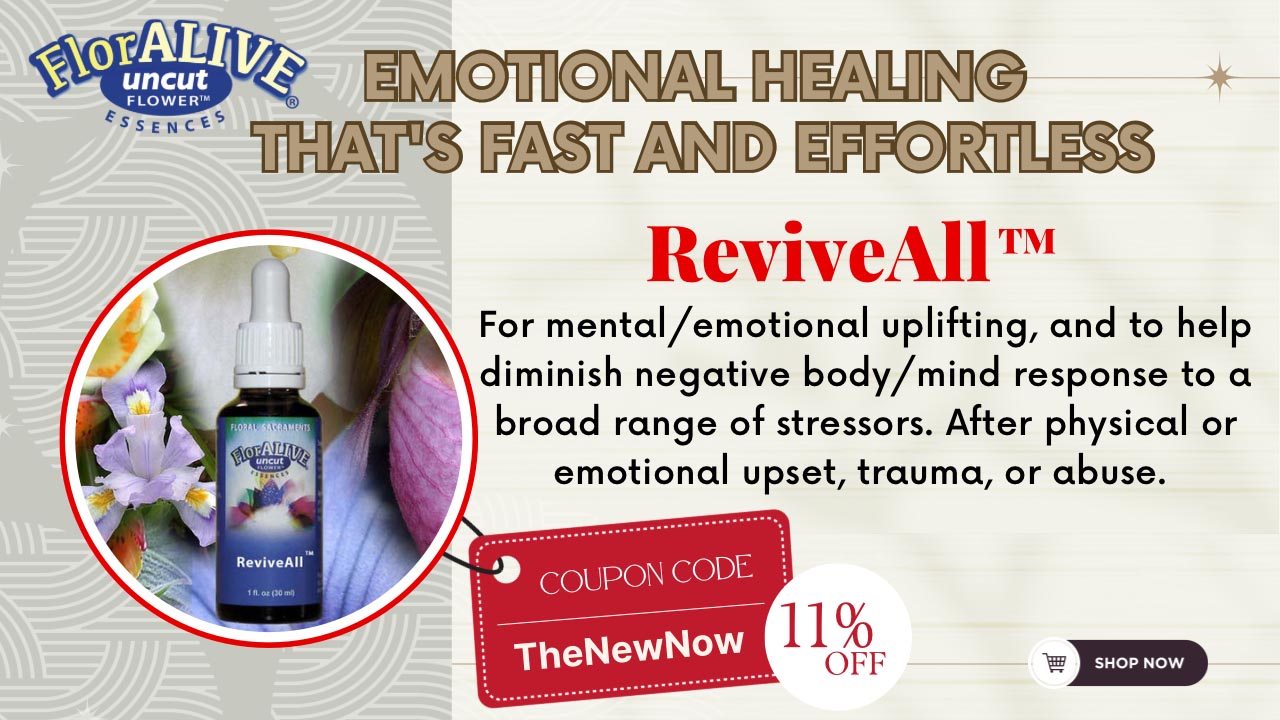“We Are Not Alone”
The Shamans Of The World Tell Us
The hubris of homo sapiens in claiming superiority over all other species has been the source of severe damage. Humanity is merely one spirit form among countless billions.

To disregard the problems facing the Earth and to proceed with business as usual in education would be a betrayal of trust. Our students want to know how to make a difference. They need hope. And it won’t come if all we can offer is another scientific theory or technological fix.
We must expand our vision to seek non-scientific alternatives. To make a difference, we must search for different understandings. Let us look to the wisdom of our ancestors. They believed that intelligence is not restricted to humans but is possessed by all creatures – plants as well as animals — and by the Earth itself.
They also believed in spirits. Human welfare was understood to depend on tapping into these wellsprings of wisdom, and all ancient societies (just like indigenous peoples today) had specialists skilled in communication with the natural world and with spirits.
These people we now call shamans, and this article argues for the inclusion of shamanic practice in the educational curriculum. Shamanism gives working access to an alternative technique of acquiring knowledge. Although a pragmatic, time-tested system, it makes no claim to be science. Its strengths and limitations are different from those of the sciences and thus complement them.
Being affective and subjective, shamanism offers another way of knowing.
Reason sets the boundaries far too narrowly for us, and would have us accept only the known – and that too with limitations – and live in a known framework, just as if we were sure how far life actually extends. . . . The more the critical reason dominates, the more impoverished life becomes. . . . Overvalued reason has this in common with political absolutism: under its dominion the individual is pauperised. – Carl Jung
Of course science will offer some valuable new directions, but at the same time we must expand our vision to seek non-scientific alternatives. To make a difference, we must search for different understandings. I am fortunate to live in a country, New Zealand, where many of my compatriots have an understanding of past and future that is fundamentally different from the prevailing ‘Western’ view.
Most in our civilisation consider it self-evident that we stand facing the future with the past behind us, but traditionally for New Zealand Maori it is the future that is behind them.
They stand facing the past and their ancestors, who are a living presence in spirit. It is the vision of the ancestors that guides the present generation into the unseen future, with one clear and overriding purpose: to prosper the generations yet to be born.
Nga wa o mua “The days of the past to which we are coming.” — Maori proverb
Let us take our cue from Maori and consider the vision of our own ancestors. No matter what our ethnic background, we will discover that our ancestors (except some of the most recent) believed, like Maori, in the existence of spirits. They also stood in awe of the rich diversity of life forms, and they believed there is mutual interdependency between these forms, humans included, given that everything that exists is alive and conscious.
They were of the opinion that intelligence is not restricted to humans but is possessed by all creatures – plants as well as animals — and, for that matter, by the Earth itself. Rock, soil, stream, ocean, wind, air, sky, the stars – all are imbued with consciousness.

Recognising that the Earth and many of its creatures vastly predate humanity and are therefore possessed of much older wisdom, our forebears honoured selected landforms, trees, plants, and animals as their ancestors. They understood that there is deep wisdom in the rhythms of the Earth and an infinite variety of life experience stored by our fellow creatures and by spirits.
Human health and welfare were understood to depend on tapping into this wellspring of wisdom. On a planet that is everywhere alive, conscious and inspirited, humans were believed to have many wise allies for counsel and aid.
What is the relevance of this to our current concern about the fate of the Earth? If the ‘star billing’ given by us moderns to our species is unwarranted – if sapiens (wisdom) is not exclusive to homo (humanity) – then could it be that the fate of the Earth is not exclusively or even primarily in our hands?
By our ancestors’ measure, we have grossly exaggerated our self-importance in the intricate web of life. Is it not conceivable that among our intelligent companions on this whirling voyage through space are some who may be capable of restoring the balance we humans have disturbed, of undoing the damage we have wrought? Possibly there are many more shoulders sharing this burden than we think.
Some of the strongest of those shoulders may be the smallest, as was demonstrated dramatically in the aftermath of the 2010 Gulf of Mexico oil well explosion. As millions of barrels of oil poured unchecked into the ocean from the uncapped well, there was a scramble to devise human technologies that would mitigate an environmental disaster of colossal scope. It took months before the flow was stopped, but in the meantime it was discovered that petroleum-eating bacteria had flourished in the oil plume and contained a vast amount of it.
The micro-organisms had not only multiplied at an astounding rate, they also had ramped up their own internal metabolism to digest the oil efficiently. They formed a natural clean-up crew capable of reducing the amount of oil in the undersea plume by half every three days.
We may take hope from the fact that this kind of help is available, but we must also start paying attention, as did our ancestors, to what our travelling companions have to say to us. Every ancient society developed communication with the natural world and with spirits, and they had specialists skilled in the techniques of that communication.
These women and men were held in high regard, but they were approached with trepidation, because they were perceived to be communing with mysterious and awesome forces.
In Old French they were called “sorcier,” those in touch with the “Source.” The Anglo-Saxons spoke of the “Ways of Wyrd” known to “wizards” and “witches.”
Shamanism is the term now applied to what has come to be recognised as a worldwide phenomenon, whose practice can be found as far back as we can go in human history. Given the association in the popular imagination of the term shamanism with ‘native, tribal’ cultures, it will come as a surprise to many to learn that their own ancestors practiced shamanism. We are all descendants of shamanic peoples.
Research over the past 150 years by scholars of comparative religion, pre-history and anthropology has revealed strikingly close similarities in the shamanic techniques employed in ancient cultures and in modern indigenous societies worldwide. The word shaman is borrowed from one of those contemporary indigenous societies, the Tungus of Siberia.
We are fortunate there are native shamans still at work, despite the sustained, and in many cases brutal, efforts of colonial governments, Christian churches, and medical authorities to suppress them. In the past forty years there has also been a Western revival of shamanic practice inspired by indigenous teachers and reinforced by the recognition that these ancient spiritual traditions are our shared inheritance.

The Role of Shamans
What do shamans do? They work to maintain or restore harmonious balance between humans and the rest of nature through powerful connections with spirit helpers. This requires a mastery of the techniques of journeying.
A shamanic journey is a trance state purposefully induced by a mind-altering activity such as rhythmic movement or repetitive sound, most often steady and sustained drumming. Less commonly, a psychotropic substance is ingested (although most Westerners today believe this to be the way.) In their altered state of consciousness, using disciplined techniques, individuals can experience visions of flying or entering into the Earth.
On their journeys, participants ask animal or guardian spirits to appear and help in finding the answer to a question about their life or about someone else who has requested aid. Healing is the primary shamanic work. This includes healing of the Earth and its plants and animals. It also includes human healing, both the healing of dissension in groups and of physical and emotional illness in individuals.
In the shamanic worldview, dis-ease is understood to result from loss of connection to the spirits of nature and consequent loss of soul – individual or collective. Shamanic journeys take us to places where we can recover fragments of lost soul.
Journeying is useful for a wide range of practical purposes, and the experience can be powerful, often surprising the beginner with the cogency and helpfulness of what is revealed.
People learn most forcefully from forms that engage more than their intellects. They remember best what they do, rather than what they read or are told. Effective education must have a large experiential component, and shamanic practice can be a totally engaging experience.
“Shamans are just the instruments through which the power of the universe works. Therefore, asking the spirits for help and trusting that they will be there is the basis of the shaman’s responsibilities. Remember, an instrument cannot play itself.” – Sandra Ingerman, Shamanic Counselor
Shared Consciousness
We have already observed that this perception of universal consciousness is the crux of the shamanic worldview. By entering the eagle’s keen eye, the bear’s great strength, the herb’s healing power, or the flame’s searing heat, the shaman shows us passageways to the spirit wisdom of natural forms. Shamans are shape-shifters, teaching that the boundaries between forms are not as impermeable as they may seem.
Dramatically, this ancient knowledge that “there is no wall between species,” rejected for three centuries by reductionist Cartesian science, has been rediscovered in this decade by molecular biologists. Lipton again:
Recent advances in genome science have revealed [that] living organisms … actually integrate their cellular communities by sharing their genes. It had been thought that genes are passed on only to progeny of an individual organism through reproduction. Now scientists realise that genes are shared not only among the individual members of a species, but also among members of different species. The sharing of genetic information via gene transfer speeds up evolution since organisms can acquire ‘learned’ experiences from other organisms. Given this sharing of genes, organisms can no longer be seen as disconnected entities; there is no wall between species.
“It seems that every process in the universe that one can observe objectively in the ordinary state of consciousness also has a subjective experiential counterpart” in altered states.
This observation by Stan Grof suggests an important reason for the inclusion of shamanic practice in the educational curriculum. Shamanism gives working access to an alternative technique of acquiring knowledge. Although a pragmatic, time-tested system, it makes no claim to be science.
Its strengths and limitations are different from those of the sciences and thus complement them. Being affective and subjective, shamanism offers another way of knowing.
On a planet that is everywhere alive, conscious and inspirited, humans have many wise allies for counsel and aid. We should lay to rest our exaggerated fears that we do not have the resources to keep this show going. Equally, we must learn humility. The hubris of homo sapiens in claiming superiority over all other species has been the source of severe damage. Humanity is merely one spirit form among countless billions.
The smallest indivisible reality is, to my mind, intelligent and is waiting there to be used by human spirits if we reach out and call them in. We rush too much with nervous hands and worried minds. We are impatient for results. What we need … is reinforcement of the soul by the invisible power waiting to be used… I know there are reservoirs of spiritual strength from which we human beings thoughtlessly cut ourselves off. — Henry Ford, Detroit News, 7 February 1926
Photo by Joshua Newton on Unsplash

John Broomfield
1. Use your affiliate link for either Healing Support promo or for Heartmend promo.
2. When the customer enters the floralive site (thru your link) they must add EITHER
A. add 3 Healing Support (combination essence) and 3 Blue Eyed Grass to the shopping cart, then go to checkout and enter the coupon code for this promo which is: HSHOLIDAYS (not case sensitive).
This will charge them for the Healing Support and they will get the Blue Eyed Grass free
Or
B. Add 6 Heartmend to shopping cart, go to checkout, there will be a charge for 4 Heartmend and two free when the coupon code HMHOLIDAYS is used.


















